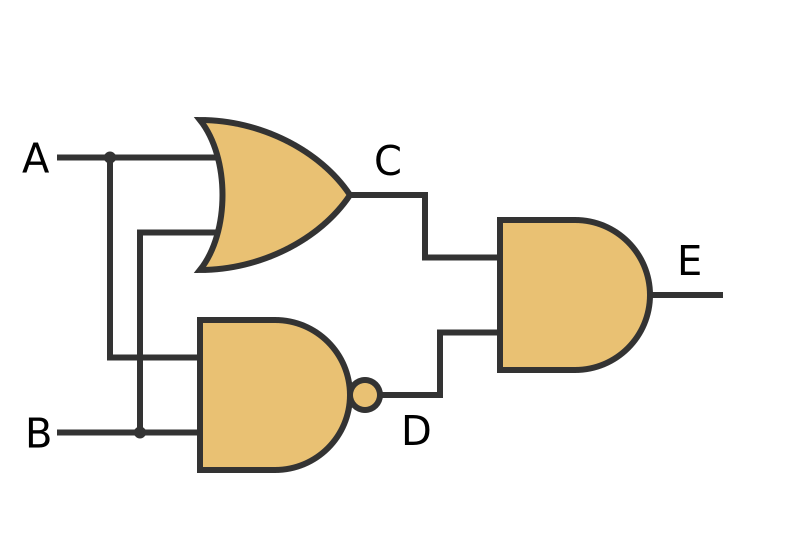Chaos
VishwaCTF 2025 Chaos Challenge
Challenge description:
You’ve stumbled upon a bunch of garbled nonsense—some might call them “encrypted messages,” but who really knows? Most of it is just random junk, but hidden somewhere in this mess is an actual secret. No keys, no hints, just you and the chaos. Good luck figuring it out—if you even can.
Alrighty, here we are given two files, and both are as shown below:
1
2
3
4
5
6
7
8
9
10
11
12
13
14
15
16
17
18
19
20
P-JjxWp#BYd|_`ZYGH3^FnD1zaeH-me0+X8b#p#lK~hH*5E=$(S_wx=RZmL~SX4?3
Pjez}Wqf2}D1BmXEPrcmd@*!?b#gX-YdLUkZ)rYoPDBDgOhi;hOI=S{3`s{xR#ZS%T0s_3N>*1JT~SgWG$|)AA!Q&YBP=;|
R%mf+b7VzRPI63VIBHQqVoqEmU`j%NENw+9Z$e6U6Ml16K~{1W7)Mt
O<;RrVI^{JZ7FPLZE7xNV=;PqaB*{aIDB?!d1`igQbY_53I
R%mf+b7VzRPI6v5JW@kDerQcqAburCUUe>9Z$eow5Ji1&QASN#
Pjez_YIbj9Z7FLjZ(?I&b$@0veS0=zaC|ywb7*XQMFBxfKtLG
RB3B)By4pjW@dgXcx7uZc71bnI5mB8eQ7#(b8>ZdPDTR
Pjez}Wqf2}D1BmXerPFtFmN(pcV~ZRY&m^?a(HZhR7gxj1V~d$TtHe!NexI&TT~KNSX5C&7+phET~JqCAuTRCdj
R%mf+b7VzRPI5_kRegFtPjWzNL_sD<DSky#XhJV+e^PBu7kUv-L1#^LSRHX|089
O<;RrVI^;KFM29sVt!|9bun{&dtrWZYB_mxeQ|PnPDV!$1V&UyTUrNMNlQyzRbNqBT2dBKR9Ia|0{
Pjez_cO`FgHv
LUeW`b7XIGCMP5-Wqx2NWHDxYeP%XecXm2-ertDdRZ<-
S7~E+By3<OVSO!lENm`kabkKidvi8paC|yxd3<s|MomLR8v
R%mf+b7VzRPI5$KSW;SNRZc*5by-PqRCrxPS1v72e^qc=6>C9S
Pjez`ZDC?!W+`K3ENoyed3<wpaW!LPad&+?Z)tmYK~GIYRzy}$Q5F
NMLeveI;&kW_@F2Yb*
R%mf+b7VzRPI6N_c~V(sTzySlCu1dLM_(&-ctS60T>
Pjez}Wqf2}D1BmXEPrcmd@*!?b#gX-YdLaqczJtq07y(wO+iBkNeMziNJ&dU5La7YQ3?
MrdqjTXAk;S9@=2U{Yvfadu5$dw6qTaC~TfLv(OJR7p!vdq_i6TL
PiZbAU~FP1ab|xjcx7i{dogBvbzwGOd1^Xod3<sp0BT1@R0Tp#PfkNcOAG
1
2
3
4
5
6
7
8
9
10
11
12
13
14
15
16
17
18
19
20
21
22
23
24
25
26
import random
import base64
import os
messages = []
with open('https://x.com/Abhinav04139720.txt', 'rb') as f:
for line in f.readlines():
messages.append(line.strip())
with open('flag.txt', 'rb') as f:
flag = f.read().strip()
messages.append(flag)
random.shuffle(messages)
def xor_encrypt(msg):
transformed = bytearray(msg)
for i in range(len(transformed)):
transformed[i] ^= (i % 256)
return base64.b85encode(transformed).decode()
with open('output.txt', 'w') as f:
for msg in messages:
encrypted_msg = xor_encrypt(msg)
f.write(f'{encrypted_msg}\n\n')
Looking at challenge.py, it appears that its pulling some text from https://x.com/Abhinav04139720.txt and flag.txt, shuffling the order of the line, then encoding each using xor, and then writing it to a file named output.txt. That’s all fine and dandy, but what is XOR?
XOR
XOR, or exclusive or is a logic gate. In a basic sense, a logic gates are “device[s] that performs a Boolean function”. They preform the most basic computation that a computer chip needs in order to function. You computer chip has hundreds of millions of logic gates on it, in order to work the way that it does. The XOR gate looks as such:
But, what does it actually do? It compares two values, both of which are either 0 or 1, and returns 1 if the two are different, and 0 if they are different for example:
| Input 1 | Input 2 | Output |
|---|---|---|
| 0 | 0 | 0 |
| 0 | 1 | 1 |
| 1 | 0 | 1 |
| 1 | 1 | 0 |
As you can see, where the input were different, a 1 was returned. The nice thing about this is that if you simply preform the XOR again and it will decrypt itself, as long as you use the same key.
Back to the Challenge
Now that we know how XOR works, this challenge is pretty simple. First off, the function xor_encrypt takes the message and turns it into an array of bytes, and then preforms an XOR on each byte in the array using the output of index MOD 256, so know we know the key to use in decrypting it. And finally it returns the XORed message encoded in base85. I’m not too concerned about the shuffling of the messages since its a simple task to decrypt them all. Let’s take a look now at the solution
My Solution
1
2
3
4
5
6
7
8
9
10
11
12
13
14
15
16
17
18
19
20
21
22
23
import base64
def xor_decrypt(msg):
decoded_msg = base64.b85decode(msg)
transformed = bytearray(decoded_msg)
for i in range(len(transformed)):
transformed[i] ^= (i % 256)
return bytes(transformed)
encrypted_messages = []
with open('output.txt', 'r') as f:
encrypted_messages = f.read().split('\n\n')
decrypted_messages = []
for encrypted_msg in encrypted_messages:
decrypted_msg = xor_decrypt(encrypted_msg)
decrypted_messages.append(decrypted_msg.decode())
for message in decrypted_messages:
print(message)
It’s almost the same as the encryption script, in fact some parts are the exact same, but utilizing the same logic from earlier we can easily decrypt it all. Lets take a look at what that looks like.
1
2
3
4
5
6
7
8
9
10
11
12
13
14
15
16
17
18
19
20
21
22
23
24
┌─[slavetomints@parrot]─[~]
└──╼ $python3 py.py
Perhaps the flag is encoded in Base64? Or maybe hex?
Or maybe the real flag is just one character different from all these fakes?
VishwaCTF{Fl4g_Or_N0t_Th4t_1s_Th3_QuesT10n}
Maybe the flag is hidden elsewhere...
VishwaCTF{T00_M4ny_F4k3_Fl4Gs_G00d_Luck}
Or inside a comment in the source code?
This is not the flag, keep looking!
Or maybe there's a script generating multiple fake flags dynamically?
VishwaCTF{CrYpt0_cRyPT0_1g_It_1s_sOm3_7hiNg_t0_D0}
Maybe it's inside another challenge, cross-referencing flags?
Or is it?
But wait... isn't this too obvious?
What if it's a hash of the real flag?
VishwaCTF{NoT_ThE_ReaL_fLaG_K33P_tRy1Ng}
Or hidden in an image using steganography?
Happy hunting!
VishwaCTF{Y0u_WiLl_N3v3r_F1nd_1t}
Or maybe the real flag is hidden inside a hidden file?
Find_the_real_flag_somewhere_in_this_mess
Oh, did you think that was real? Keep digging!
Looks like we have a few flags, lets submit the one that doesn’t allude to being a fake flag.
FLAG: VishwaCTF{CrYpt0_cRyPT0_1g_It_1s_sOm3_7hiNg_t0_D0}
